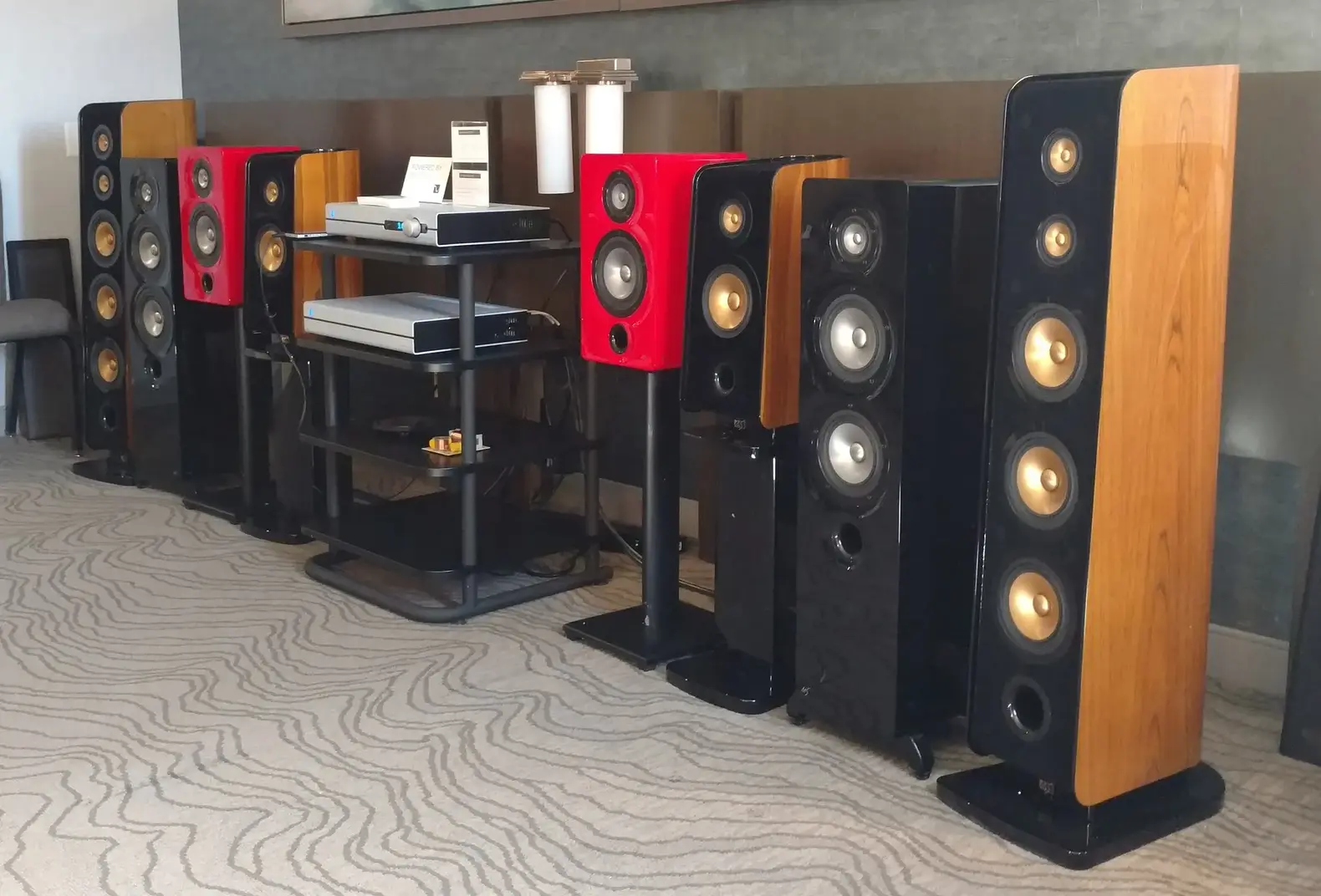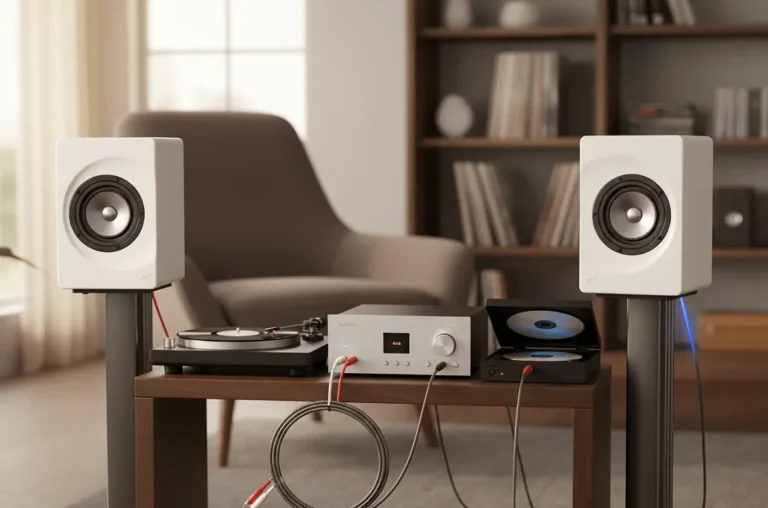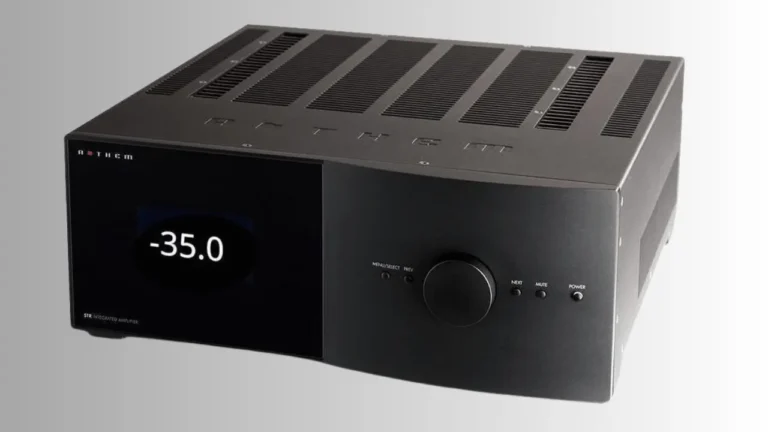How To Choose A Floor-Standing Speaker
Picking the right floor-standing speakers isn’t just about sound quality it’s also about room size. If your room is small, big, powerful speakers won’t sound their best. You might end up with boomy, unbalanced bass (and that’s almost always the case). The solution? Match your speakers to your space. Find a pair that fits both your room’s size and your audio needs.
Due to their design features and capabilities, floor-standing speakers (called floorstanders among audiophiles) occupy a special place among other types of acoustic systems (AS). Such acoustics are capable of filling a room with a voluminous detailed sound that will find a response in the soul of every listener. From rich bass to crystal clear high frequencies (HF) – correctly selected floor-standing acoustic systems will transform any piece of music, creating a feeling of presence at a live concert.
Types of floor standing speakers
Active
Equipped with a built-in amplifier, so you don’t have to dance with a tambourine around it, just connect it to a sound source. This simplifies the installation and operation process.
Advantages:
- convenience, ease of use;
- compactness, since no additional equipment is required;
- Suitable for small rooms and background listening.
Flaws:
- limited options for customization and sound enhancement;
- dependence on the built-in amplifier, which may not meet your sound quality requirements.
Passive
Requires connection to an external amplifier. This gives the user more freedom in selecting and configuring system components, allowing them to achieve the desired sound.
Advantages:
- sound tuning by replacing or modifying individual components (amplifiers, DACs, cables);
- a wide range of equipment, allowing you to create a system according to your preferences.
Flaws:
- it takes more time and effort to set up the system;
- The costs of additional components can be significant.
The horn stands apart… (antique, expensive)
Like the passive one, it requires an amplifier. Horn floor acoustics are distinguished by their design – the sound is amplified and directed through a special horn. Due to this, high sensitivity and powerful sound can be achieved.
Advantages:
- high sensitivity, efficiency in reproducing loud, rich sounds;
- wide sound stage, excellent detail, especially in the mid- and high-frequency range;
- suitable for large spaces;
- liked by lovers of powerful, “live” sound.
Flaws:
- large size and weight, which requires more space for installation;
- more complex setup, especially when combined with other audio system components;
- harsh, aggressive sound, which is not suitable for some musical genres.
Technical characteristics of floor standing speakers
We will talk about the four most important parameters: power, sensitivity, frequency range, impedance.
Power
This is one of the key parameters that you should pay attention to when choosing floor-standing speakers. There are two main indicators: nominal and peak power. Nominal power (RMS) indicates the load that the floor-standing speakers can withstand for a long time without the risk of damage. Peak is the maximum power level. The speakers can withstand it for a short time, for example, during sudden volume surges.
The parameter directly affects the volume and dynamic range of the sound. The higher the nominal power of the speaker, the louder it can play without distortion. But too high a value in a small room may be excessive. And this will lead to sound distortion. On the contrary, insufficient power in a spacious room will not provide a sufficient level of volume and detail. So you need to choose a reasonable compromise.
It is generally recommended to use 50W for rooms up to 20 m², 50-100W for 20-30 m², over 100W for larger rooms.
Sensitivity
Measured in decibels (dB). Indicates how much volume a floor-standing speaker can produce when fed a certain amount of power (usually 1 W at 1 m). The higher the sensitivity, the louder the sound at the same power level.
For home use, the optimal sensitivity is considered to be in the range of 87–92 dB. Such floor-standing speakers sound quite loud with moderate amplifier power, which is especially important for home audio systems.
Frequency range
Shows what frequencies the speaker is capable of reproducing. Measured in hertz (Hz). The standard frequency range for quality floor-standing speakers is from 20 Hz to 20 kHz. This is exactly the range that the human ear hears. The lower limit is responsible for bass, midrange frequencies for vocals and instruments, and the upper limit is for high frequencies (cymbals, string instruments).
Impedance
The resistance of the speaker to electric current. Measured in ohms (Ω). This parameter plays an important role in the compatibility of the speaker system with the amplifier. Low impedance (e.g. 4 ohms) requires more current from the amplifier, which can create an additional load on the equipment. High (e.g. 8 ohms) requires less current, but it may not provide a sufficient volume level with a less powerful amplifier. For home use, floor-standing speakers with an impedance of 6–8 ohms are considered optimal. They are compatible with most standard amplifiers.
If you plan to use a powerful amplifier, you can consider speakers with an impedance of 4 ohms. But it is important to make sure that the device is capable of safely handling this load.
Housing materials and design features
One of the most important factors that determines the sound quality of floor-standing speakers is the material from which the body of the floor-standing speakers is made. This affects resonances, vibrations and, ultimately, the purity and accuracy of sound reproduction.
The body of floor-standing speakers is usually made of wood (elite models) or MDF (a cheaper, but quite decent, alternative to wood). Wood has natural acoustic properties that help minimize unwanted vibrations. An MDF body also absorbs vibrations well, providing a stable and natural sound. It is no coincidence that this is a popular choice for high-quality acoustics of the middle and high levels.
Case types
Closed, or sealed. This is a case without holes. It isolates the inside of the speaker. This minimizes distortion, and the sound becomes more precise. This is especially true for low frequencies. Closed cases are characterized by elastic bass. But the speakers in them may require more powerful amplification to achieve greater volume.
Advantages:
- minimization of distortions, resonances;
- precise, controlled bass.
Flaws:
- a powerful amplifier is required to achieve high volume;
- less efficient in reproducing extremely low frequencies compared to bass-reflex speakers.
Bass-reflex, also called ported. Such a case has special holes (ports) on the front or rear wall through which air comes out. This increases the efficiency of reproduction of low frequencies, gives deeper, more powerful bass with less load on the amplifier.
Advantages:
- deeper and more powerful bass;
- higher efficiency, especially in low frequency reproduction.
Flaws:
- If the port is positioned incorrectly, distortion or “wandering” bass may occur;
- less precision and control of low frequencies compared to closed enclosures.
Test before purchase
When it comes to choosing floorstanding speakers, there is no substitute for listening in person. Specifications and reviews will give you a general idea of the floorstanding speakers. But only live listening will allow you to assess how well they suit you. Each person perceives sound differently, and what sounds perfect to one may not suit another. Personal listening helps you understand how exactly the floorstanding speakers reproduce your favorite music and behave in different genres.
When listening, it is important to focus on several aspects:
- Frequency balance. How do floorstanding speakers reproduce the lows, highs, and mids? When properly balanced, the sound is cohesive, with no one frequency dominating. Bass is powerful but not overpowered, midrange is clear and detailed, and highs are bright but not harsh.
- Detailing. Good speakers should clearly convey all the nuances of a musical composition. When listening to tracks, pay attention to how the floor-standing speakers convey the sounds of instruments, voices, effects, how cleanly, whether there is any blurriness.
- Stage volume. Evaluate whether there is a sense of space and depth in the sound. High-quality floorstanders should transmit sound in such a way that it fills the room, creating the effect of presence at a concert or in the studio. Try to imagine the arrangement of instruments, singers in space: the more accurately you can “see” them on the sound stage, the better.
Floorstanding speakers are the key to creating a quality and immersive sound environment. The right speaker system should match your personal preferences, room size, and listening style. Take the time to test different models to find the one that suits your needs.



